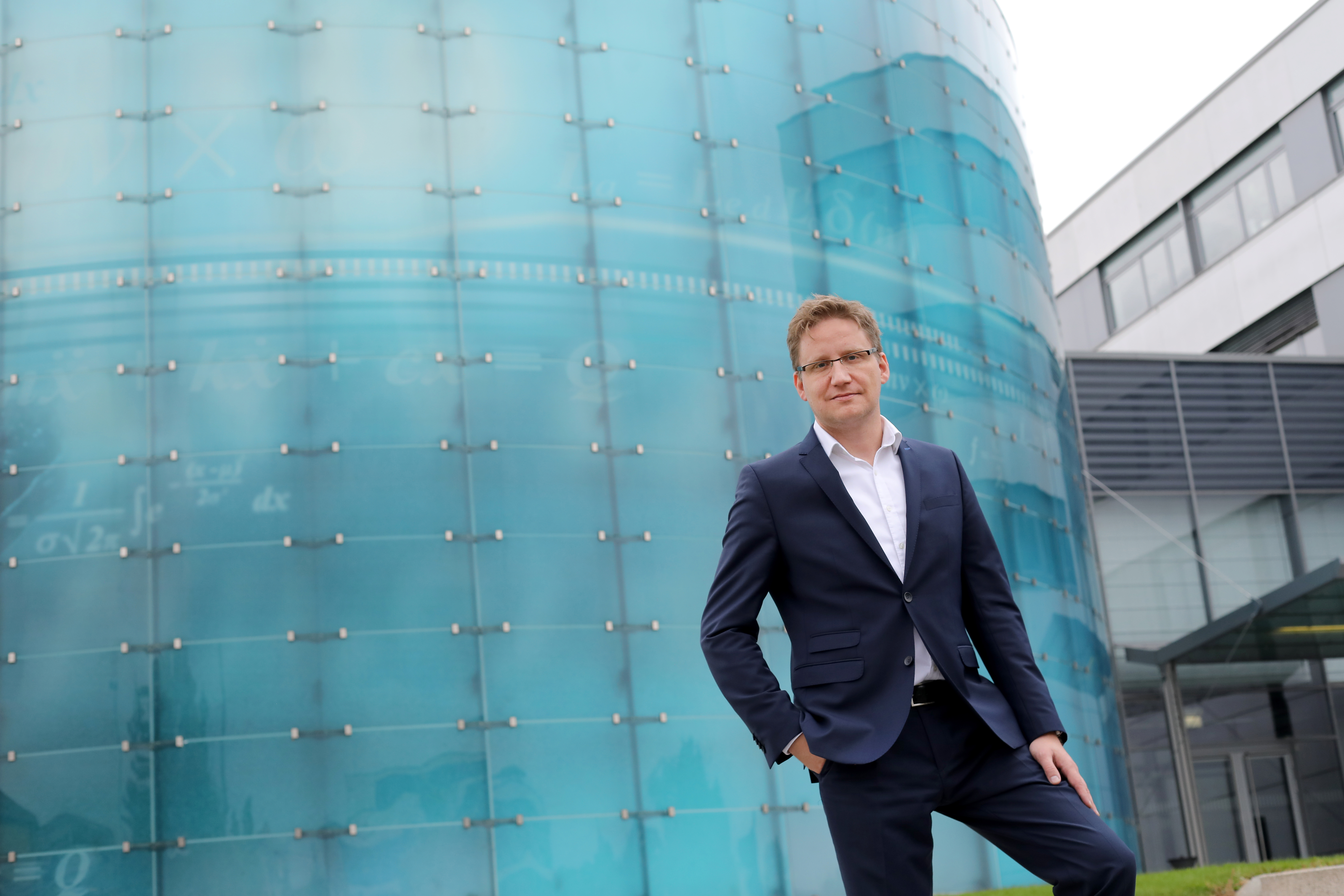Mixed reality as an interface to humans

Steffen Masik has been teaching Virtual Reality / Augmented Reality (VR/AR) Management in the career-integrated master’s degree program in Engineering and Management at Anhalt University of Applied Sciences since the summer semester 2020. In addition to lecturing, he manages the mixed reality laboratory Elbedome in Magdeburg. As a research branch of the Fraunhofer-Gesellschaft, the largest VR laboratory in Europe realizes complex, interactive 3D visualizations. Therefore, Steffen Masik (hereafter referred to as SM) is a specialist in this field and a great asset to the career-integrated degree program. We spoke with him about his field of expertise and its importance to students.
Mr. Masik, welcome to Anhalt University of Applied Sciences. We would like to get to know you a little better. Please introduce yourself.
SM: “I studied the degree program in Computational Visualistics in Magdeburg and have now been working on the application of virtual and augmented reality – or mixed reality in general – in different areas of industry for 15 years. For almost as long, I have been in charge of the Elbedome, one of the largest mixed reality systems in the world; now in its second evolutionary stage. The Fraunhofer-Gesellschaft focuses on applied research and, therefore, I am both a researcher and user at the same time. From a researcher's perspective, the Elbedome is a laboratory for testing new technologies and processes. From a user's perspective, it is an experience, planning, creative or learning space. This versatility fascinates me. But I still prefer to spend my free time back in real life with my family.”
Since Industry 4.0 – at the latest – companies have been under pressure to digitize for more flexible production. One component of the degree program is VR/AR management. Mr. Masik, you are an expert in your field, why is it important to gain more knowledge in this area?
SM: “The increasing digitization of several aspects of production system planning and operation naturally increases complexity. The planning models are supplemented by measurement data from thousands of individual measuring and sensor systems of machines and plants as well as data from the company's IT systems. Together, they form a so-called cyber-physical system or, to put it simply, a digital twin. People need interfaces for this system that can quickly filter out specific information and present it in a comprehensible and interactive way. In addition to artificial intelligence for filtering, mixed reality can play a central role here in the future as an interface to humans.”
Where does your enthusiasm for the subject come from and where is the trend going?
SM: “The key advantage of mixed reality is scalability. The intended application determines whether, for example, marketing with the help of VR glasses – which can replace both visual and acoustic stimuli of reality – creates excitement and arouses emotions. It can also decide whether reality is supplemented by only a few path-breaking elements by utilizing AR glasses, possibly to improve orientation in a warehouse. The basic model can always be the same. In the near future, AR glasses will be our constant companions, adding useful and less useful information to our perception depending on the context. Until then, however, there are still a few technical and very human hurdles to overcome.”
Earning a master’s degree in or studying Engineering and Management is a career stepping stone for many students. What role does virtual reality play for prospective engineering managers?
SM: “Mixed reality can ensure that different experts in a company have the same understanding of a task, can communicate better and more confidently with each other, even about complex issues and can make sound decisions on this basis. Due to their interdisciplinary education, engineering managers can bridge the complicated gap between engineers and business economists and understand and combine the different goals, views and approaches. Mixed reality as a tool can support this task in many ways.”
You have finished your first lecture, which you held online due to the Covid-19 pandemic. How satisfied are you with your lecture?
SM: “Online lectures are, of course, a challenge, as the dialogue with the students is severely limited. It is very difficult to get a feel for whether you have already said enough about a core topic or whether you should go into more detail. Mixed reality is also a very practical topic. It only becomes really memorable and tangible through demonstration, for example, with VR glasses or an AR headset and through personal experience. I hope we don't have to do without it next time."
Thank you very much for the interview, Mr. Masik!

